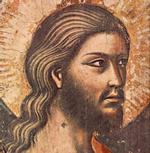Catholic Dictionary
Find accurate definitions of over 5,000 Catholic terms and phrases (including abbreviations). Based on Fr. John Hardon's Modern Catholic Dictionary, © Eternal Life. Used with permission.
Random Term from the Dictionary:
ROMAN CATACOMBS
A labyrinth of subterranean galleries where the early Christians buried their dead and held religious services. In times of persecution, besides a place to worship, they offered escape and concealment. Begun in apostolic times, they continued in use until A.D. 400. At that time there were twenty-five great catacombs and twenty lesser ones. Like all cemeteries, they were constructed from the first to the third mile outside Rome. The Christians made long recesses in the walls, not small niches for cinerary urns as did the non-Christians, to hold one to three bodies each. When filled they were hermitically sealed, and often the covering slab contained inscriptions or were decorated with various symbols; e.g., the Good Shepherd, dove, anchor, fish, and peacock. These were the first representations of Christian art. The space allotted to a burial was necessarily limited. Larger tombs were only for popes and martyrs. After 313 the catacombs were not really needed, but they remained places of pilgrimage until the seventh century. About this time the demand for relics grew and quantities of bones were taken from the catacombs to individual churches. The Church finally stopped the universal confiscation of relics. It was reported that twenty-eight cartloads were taken to the Pantheon from the catacombs for burial in the new St. Mary of the Martyrs. The old catacombs became overgrown and soon forgotten except the one under St. Sebastian's Church. In the sixteenth century interest revived and the search for other catacombs began. Today the Catacombs of Sebastian and Callistus are the most visited, with those of Sts. Domitilla, Agnes, Priscilla, and Pancratius also open to the public. The chief services in the catacombs were the Eucharistic celebration on the anniversaries of the martyrs. The inscriptions on the tomb slabs are among the earliest witnesses to the Christian faith. The 1929 concordat with Italy places the Holy See in charge of the catacombs, with responsibility for their maintenance, supervision, preservation, and expansion.






